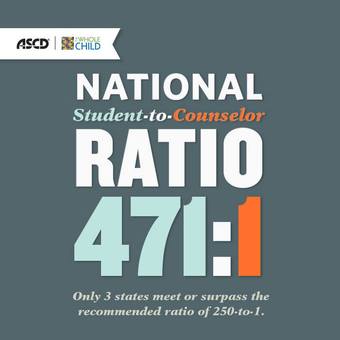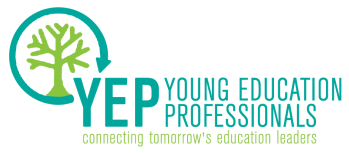 Credit: Assoc. for Supervision and Curriculum Development
Credit: Assoc. for Supervision and Curriculum Development First Lady Michelle Obama thinks that’s a mistake. If we're to reach the president's Northstar goal (to have the highest proportion of college graduates in the world by 2020), Mrs. Obama says schools and states must empower school counselors to help us get there. That’s why school counselors are a part of her Reach Higher Initiative, she told attendees at the American School Counselor Association (ASCA) conference earlier this month.
“We’re not just a resource,” Goldman shared with me after the conference. “We have a plan, and we need to implement that plan.”
School counselors are school leaders and student advocates who support academic, social/emotional, and college and career development in students. Counselors do this by creating comprehensive school counseling programs aligned with annual school-wide goals, and use data to evaluate their impact. On any given day, school counselors, like myself, may be meeting with a student one-on-one about course selection, teaching classroom lessons about college admissions, leading a small-group on time management, analyzing attendance data, or collaborating with teachers to implement tiered behavioral support. While we still meet with students facing personal crisis, our role has expanded. At elementary, middle, or high school, school counselors are instrumental in developing college- and career-ready students.
Goldman’s work is an example of the potential school counselors have to impact student achievement on a greater scale. Mrs. Obama agrees, as does Secretary of Education Arne Duncan, who sent a letter last month to chief state school officers, putting pressure on state education leaders to “develop policies and programs that enable school counselors to become more effective at helping greater numbers of students” by the end of this summer. Here is how states can support school counselors’ work:
- Reasonable counselor-to-student ratios. ASCA recommends a counselor-to-student ratio of 1 to 250, but only three states — Wyoming, Vermont, and New Hampshire — fall within that range. Counselors in some states have caseloads triple that size, and the national average is 1 to 471. Imagine being a school counselor in California where the average caseload is 1,016 students, the highest in the country. “We need more time to establish relationships with all students,” says Goldman. Those relationships have a positive impact on student learning and school counselors cannot work effectively if they’re managing what the First Lady calls “outrageous” caseloads.
- Improved school counselor preparation programs. To some, counselors have been seen as therapists working in schools, but that is not the case. The profession has transformed to meet the academic, social/emotional, and college/career needs of students. Counselor preparation programs should reflect this change. To become a school counselor, most school systems require at least a master’s degree from a state-approved counselor preparation program. San Diego State University, Johns Hopkins University, and Harvard University are revamping their programs to require students to complete data analysis and advocacy projects, take courses in college and career counseling, and increase the focus on urban schools. These schools have shared their progress with the U.S. Department of Education and will convene at Harvard this summer to discuss expanding these efforts.
- Meaningful professional development. To grow as professionals, counselors, like teachers, need professional development. More often than not, school-, district-, and state-based programming is not relevant to our profession. When schools are planning professional development for teachers, counselors and other student services staff are an after thought. Since the topics often cater to classroom teachers, counselors should have the opportunity to use this time to meet with other colleagues in their districts. School counselors need training in using and analyzing data, technology integration, and opportunities to collaborate on program development and lesson plans. This is especially critical for elementary school counselors who may be the only counselor in their school. Additionally, to align the work of elementary, middle, and high school counselors, school districts should provide opportunities for vertical collaboration throughout the K-12 pipeline.
Connie Ward is a school counselor in DC. Reach her via email or Twitter.

 RSS Feed
RSS Feed